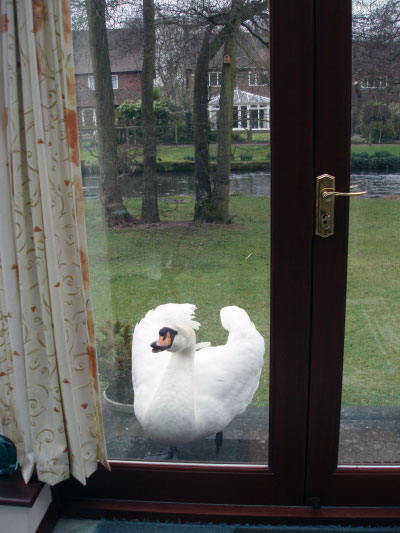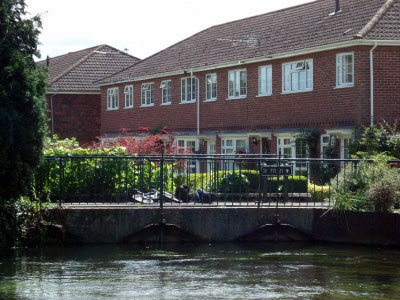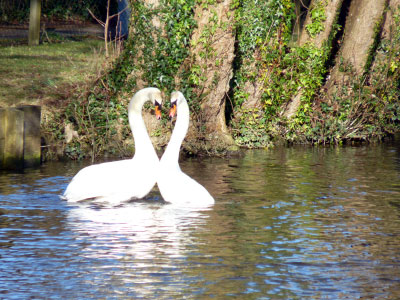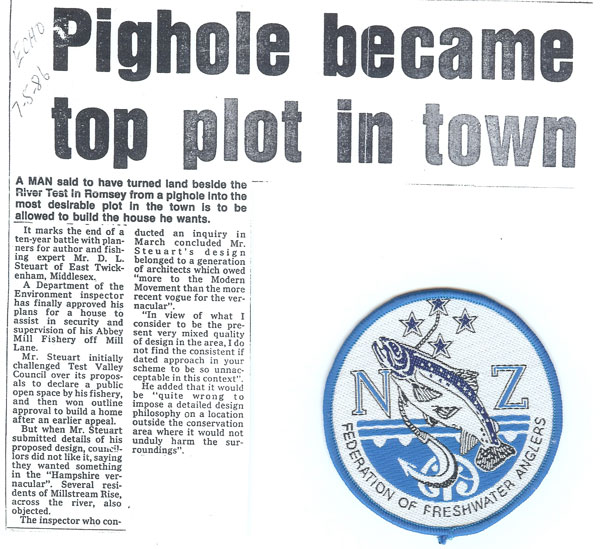Look guys, I know very well that nothing I write will have any sway over those in authorities, trusts, or whatever, to change their minds about the problems that otters will bring to some fisheries, which is why I had not written about the matter before I was asked to do so by ‘Fishing Magic.’ Having now realised the interest in the subject due to the debates that followed the articles, to clarify even more how my thoughts have evolved, and to answer those criticisms that have been offered with constructive argument, probably needs another article.
Almost my whole life has been involved with fishing, including playing truant to go fishing during the war, making fishing rods in a hospital bed at the age of 18 and 19, which were sold, entering the fishing tackle trade at the age of 19 and staying with it until I was 58, writing my first fishing article at 21 and my first angling book at 24, both of which I was asked to write, and I am still writing when asked, buying a stretch of river at 48, and still fishing for every species of fish that I can.
Kay was 19 when we met and I was 22, and she eventually became a Director of the fishing tackle business. We fished together for almost every species of freshwater fish, and many of the sea fishes in these Islands, and we also fished together, and with several friends for many species around the world, until she became very ill in 2005. Unfortunately she passed away in 2007 and so I lost my best friend and angling companion. The foregoing is merely to try and show that I have been around fishing long enough to form views that have come from a long experience of many aspects of angling.
 |
|
“Pet swan at the door. I hate wildlife so much |
Over the years that I have been involved with angling, I have always wondered why anglers have not used the law more to protect our fisheries, although I know why really, few of us can afford it, and consequently I can quite understand the ACA/Angling Trust only being prepared to fight a case where there is a 90% chance of winning. Losing a case could bankrupt the organisation.
Something I have quoted in argument often which does not seem to be pushed enough is the law relating to angling. If we go right back to the Salmon and Freshwater Fisheries Act, 1923, and include all the amendments and ‘tinkering’ that followed, until, and including the Water Resources Act of 1963, the whole purpose of the Acts and amendments were to, ‘Maintain, Protect, and Develop, fisheries. This wording comes up regularly within the Acts, apart from the word ‘protect’ sometimes being changed to ‘improve,’ and yet fishery interests do not appear to have ever used this law to maintain, protect, and develop fishery interests. Wherever one lives it should be quite possible to ‘lobby’ one’s Member of Parliament to do his best to follow the meaning of the Acts, and make sure the law is being carried out, and where otters are inflicting damage to fisheries, there should be a means to deal with the problem, and I would include that those who reintroduced otters into areas where they were no longer in evidence should be held responsible for the damage done to fisheries. No one could argue that otters do not damage fisheries, and therefore the authorities who have allowed their introduction or reintroduction are in contravention of the Fishery Acts which include those important words, ‘Maintain and Protect.’
The whole purpose of my first article on the subject of otters was not to ask for otters to be wiped out, but controlled where necessary by culling in order to protect fisheries as is the law of this Land. My point was, and still is, and, in order to follow the law relating to fisheries, and to protect all the hard work and years of effort put into my fishery, I should be able to control otters, and the same should apply to all other fisheries.
A very interesting article which appeared in the ‘Newbury Weekly News’ was forwarded to me by Geoff Maynard, which stated an otter was seen and filmed in daylight in the River Lambourn. Several parts of the piece showed the natural affinity that we humans have for such an enchanting animal, and without the knowledge of the damage they do this is quite understandable. As otters have been rare for several years, this knowledge that they are a pest is relatively unknown, and as I have said on numerous occasions they are a beautiful animal, and it is only natural with man’s affinity to animals that we have a soft spot for them. Personally I think that cows, and calves, with their beautiful eyes and lovely faces are enchanting too, but man still kills them by the thousands for food, and most of us enjoy eating them. But there were parts of the article which gave a true picture if the emotional aspect is put aside.
The gentleman who filmed the animal said he did so, “Because he noticed the disappearance of a large number of fish.” To me that means there was damage by an otter to a fishery. If the gentleman owned the fishery or fished, and did not mind his fish being killed, he may have filmed the otter as a happy event, but it is more likely that as an owner he would have quite the opposite view I would suggest. In any case the event is contrary to the maintenance or protection of fisheries as per the law.
It was very honest reporting though as the article also said that otters have a preference for eels, a species which the EA say are in decline. I’m sure predation by otters will help to increase the eel population????????? Double standards? It also said that otters eat waterfowl and small mammals, and those who have an affinity to birds and voles cannot be too happy about that if it is properly brought to their notice.
What made me angry though was the words of an EA spokesman. “This is fantastic news. The presence of otters is a very good indicator of the environmental health of a river. It reflects good water quality, habitat and food supply.” The EA using the presence of an otter as an instrument of propaganda to try and imply they are all doing a good job is dubious. All it shows is that there are fish in the river for the animal to eat, and as fish can survive in pretty lousy conditions it is no proof of good quality of a river at all. I’m not saying the River Lambourn is not of good quality, but the presence of an otter certainly doesn’t prove it.
 |
|
The three floodgates. |
The River Lambourn flows into the River Kennet where otters are also present, and any angler who has known the Kennet for any length of time knows that the River Kennet’s condition has deteriorated badly over several years, but if we used the same propaganda that the EA guy used it’s in wonderful condition. Politics?
One forum poster stated that otters were important to conservation as they create, “Numerous bankside habitats and are important to wetlands,” but did not explain what bankside habitat they create, why they are important to wetlands, or how they are important in conservation terms by whatever it is they do. As cynical as I am about authority, I am also cynical about some of the views of conservationists since it was these self-appointed people who released mink into the wild. No one has yet told me what is the important role of otters within river systems and followed on with an explanation, except for one who said otters would remove adult fish. That is illogical. Perhaps we could reduce the human population by removing adults as there is nothing, apart from disease and each other, to stop a new adult population occurring, but fish have many predators, including an increasing otter population, to drastically slow their development into adults. It has also been stated that otters kill mink which kill voles, so that is a good point in their favour, but as the article in the Newbury Weekly News stated, otters eat small mammals and waterfowl, so they will also kill voles, so why is there a fuss about mink killing voles but not about otters doing the same. Of course it will be said that mink are not indigenous, but as the otter is it’s fine if it kills eels, salmon, voles, and any other species already having a problem, and on a level of possible danger to its survival. Double standards?
Having said in my last article that I was always dubious about figures used to prove points, I had a look at the EA Otter Survey to see if the figure of 117 otter releases was correct. According to their figures, 157 have been introduced to various areas, and I am still doubtful if this is correct as who oversees any releases from otter farms, and why do we need otter farms if there are not going to be releases?
Reintroduced –
- Welland, 7
- Louth Coastal, 17
- Nene, 8.
- Ancholme, 6.
- N. Norfolk, 6.
- E. Suffolk, 7.
- N. Essex, 17.
- Broadland, 19.
- Old Bedford, 4.
- Ely Ouse, 9.
- Bedford, 4.
- Roding Area, 17.
- Upper Lee, 6.
- Upper Thames, 17.
- Bristol Avon, 2.
- Hampshire Avon, 2.
- Dorset Stour, 5.
- Test and Itchen, 4.
Total 157.
If I have got these figures wrong I am quite happy to be corrected, but right or wrong, as a protected species there will be many more than these in a few years, with unpleasant consequences for many fisheries.
Yesterday, as it was the last day of the coarse fishing season, a friend and I fished a bit of my fishery and had 10 species of fish whilst trotting with maggots. I had an 11lb carp which I landed from a fast river on a 2lb 12oz hooklink. I am mentioning the carp as there was a question as to where they came from in the River Test, but if my first article had been read properly, I wrote, “When they first appeared, (carp) owing to flooding I believe.” There are large carp downstream to above 30lb, which got into the river due to the flooding of Broadlands Lake.
 |
|
Pet swans breeding again. |
There was concern about livelihoods if fish farms were no longer allowed to cause damage to our rivers by being refused licences to operate, but many more livelihoods than those created by fish farms are within the angling scene. Tackle, travel, accommodation, the pub trade, bailiffs and keepers, and etc., and so I will not accept that it is necessary to have commercial fish farms on our rivers doing harm just to create a few jobs. Many years ago I was asked by a Committee Member of the New Zealand Federation of Freshwater Anglers for help in fighting their Government, who wished to introduce commercial fish farming to that Country. I sent a huge mass of stuff to them, most of which was ignored or reputed here by MAAF, and the NZ gentleman informed me that my material helped to defeat their Government. Consequently the only fish bred in New Zealand within their beautiful rivers are for stocking purposes for angling. How I wish that had happened here.
If there is any doubt that I have fought and won 3 Public Inquiries, and helped to win a fourth, I will quickly give brief details. The first one was when the Test Valley Borough Council wished to take my riverside land. As the land is, of course, with riparian rights, they would also have taken my fishery. I call it steal. I fought against this and won at a Public Inquiry where Test Valley gave misinformation to the Inquiry Inspector, and refused to disclose some information. The second Public Inquiry was when I wished to build a house alongside the river which the Planning Officers agreed was within planning procedure, but the Council would not allow. A report in the paper stated they went against the advice of their own Planning Officers. I won outline planning permission. The third Public Inquiry was when they would not let me build an ordinary 3 bedroom house and tried to price me out by wishing a large dwelling as, “The site demands it.” The Inspector agreed that I should build the very first house of which plans had been presented to the Council. So I won that one too, but all of this took ten years, made me a very cynical man about authority, and cost me thousands of pounds I could ill afford.
The fourth Public Inquiry was after I had a stroke in 2001. According to my late wife Kay, it was due to many nights up over a long period to control river levels by means of the 5 major sluice gates, and the 3 large flood gates on our property. If these are not correctly adjusted there would be serious flooding in the area, and possibly the town. I had asked Kay what she wished to do if I had a more serious stroke and died. Would she wish to move away from the river? She said she wanted to see her days out where we were, but I explained she would not be able to manage the sluices, so we asked a young friend if he would take them over if we did a deal with him, and let him have the land at the bottom end of the fishery where the sluices were while I retained the fishing rights. He could build a house there, which was necessary to have control of the sluice gates. He agreed, although we all knew he would have a fight with the Test Valley Borough Council to get planning permission.
One of the Council’s arguments was that there would be plenty of time, about 2 hours, to get to the site if there was a flash flood.
To illustrate the fallacy of that argument we showed that if just two gates were only half lowered, without any extra water, that the river would be lapping the banks in 17 minutes. The problem with vandals was also argued as they had already lowered gates in the past, but luckily not during heavy rain. Another argument they used was that my house had only been allowed for me to look after the fishery and manage the sluices, but I had kept the Inspector’s Report which showed that to be untrue. My young friend won the Public Inquiry, but the Inspector did include a couple of conditions. One was that this time the house was tied to the sluices, and whoever owned it was responsible for their control. The other was that there would be a landscaping condition because of the river environment, and the EA would be able to arrange what was necessary. All the foregoing is to show why I was not at all happy with the EA Officer who suggested having an otter holt. He should have known about the river environment, that it was a salmon river, and salmon were at an unsustainable level according to the EA.
The authority empowered to protect fisheries has made many bye-laws, restrictions on angling methods, no gaffs, knotless and soft landing nets and keepnets, close season dates, the dates within which fish can or can not be killed, and so on, so how can that same authority justify encouraging the reintroduction of a creature designed to kill the fish which all their bye-laws have been instigated to protect. That is not following the Law of the Land. Double standards!
Dave Steuart
 |
|
The ‘Pighole’ mentioned here is now the millpool shown in the first photo at the top of this |













